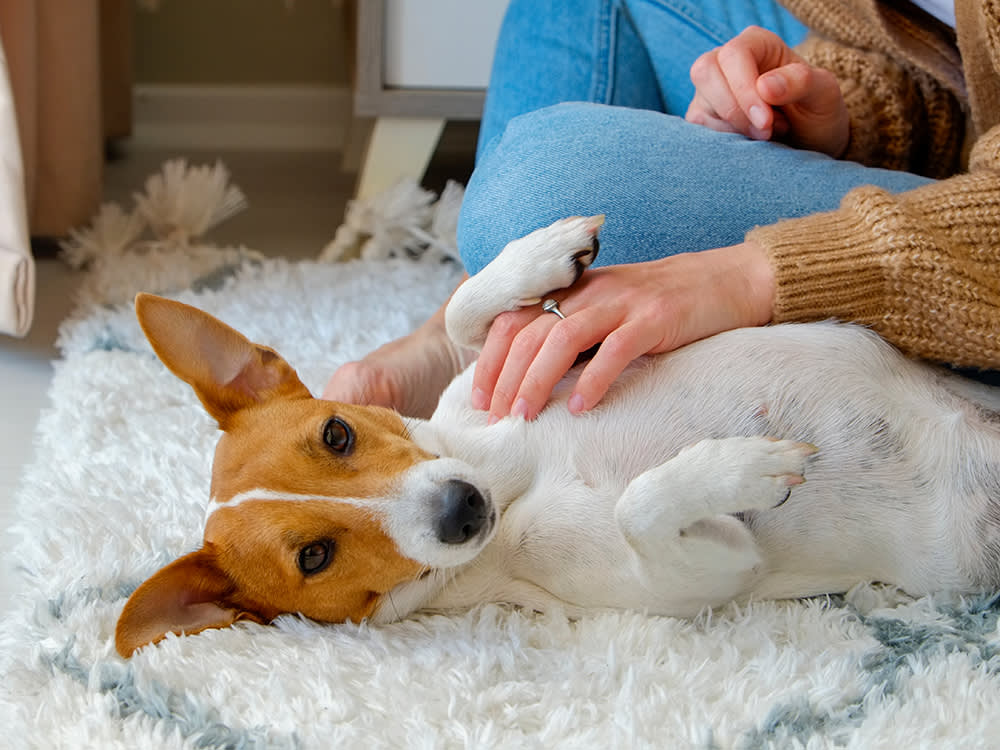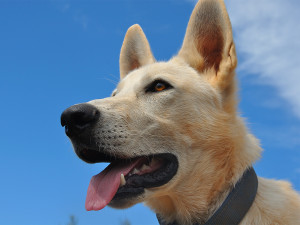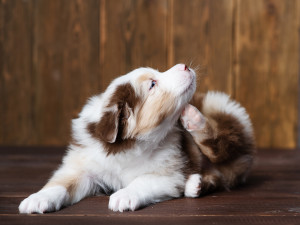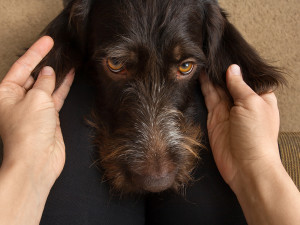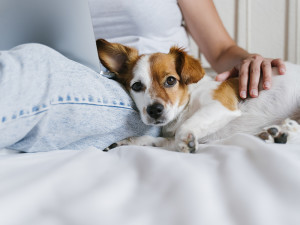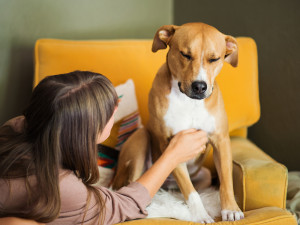How to Do a DIY Dog Checkup in 7 Steps
You can do a DIY exam on your dog from your couch.
Dogs don’t always make it easy for us to figure out what’s going on with them, but their very survival is our responsibility (breathe; it’s OK, you’ve got this). One way you can stay in tune with your dog’s health is with regular dog health checks at home. So, roll up your sleeves and get ready to live your Grey’s Anatomy fantasy, because today you’re your pup’s DIY doctor.
Before you start the exam, take a good look at your dog when they’re just hanging out; observe their posture and general demeanor. Getting a good picture of your dog’s “normal” in a relaxed environment will help you pick up any subtle changes that may occur. After a home checkup, you can consult your veterinarian if you’re concerned about any exam finding; early recognition can save your dog’s life.
Snap a pic of your pup’s teeth, and GREENIES™ will help you spot potential signs of oral health issues.
Take their temperature.
Using a digital rectal thermometer (the ear type is less reliable, and mercury thermometers can break), lubricate the end with petroleum jelly and gently insert it into the rectum, about 1 inch for small dogs, and about 2 inches for larger ones. If it does not slide in easily, do not force it. A normal dog’s body temperature is between 100 degrees Fahrenheit and 102.5 degrees Fahrenheit.
Check their heart rate.
Take their pulse at the femoral artery, which you’ll find on the inside of their thigh; feel for the roll of the artery and a pulsing sensation. Count the number of pulses in 15 seconds and multiply by four. A dog’s pulse rate is highly variable, but generally, normal dog heart rate is 80 to 120 beats per minute. Relaxed, large-breed or athletic dogs tend to have slower rates, while the rate for puppies and small dogs tends to be higher.
How much do you spend on your pet per year?
Start at their head.
The nose should be smooth, soft, and clean, like supple leather (noses aren’t necessarily always cool or moist). Their eyes should be bright, moist, and clear, with pupils equal in size; the whites should be white, with only a few visible blood vessels. The ears should be clean, dry, and almost odor-free; you should be able to gently massage them without complaint. In the mouth, teeth should be clean and white, with the gums uniformly pink and moist to the touch.
Watch their chest as they breathe.
Your pup’s chest wall should move in and out easily and rhythmically in an effortless way; each breath should look the same as the last. (Unless they’re panting, you should not be able to hear your dog breathe.) A normal dog’s resting respiration rate is 15 to 30 breaths per minute; a sleeping or relaxed dog would be near the low end, while an active and engaged dog would be higher. As with heart rates, smaller dogs tend to have a faster resting breathing rate than larger dogs.
Examine their skin.
One of the body’s major organs and an important indicator of overall health, the skin of a healthy dog is soft and unbroken, with minimal odor and — except for wirehaired breeds — the hair coat is shiny and smooth.
Check their hydration with the skin turgor test.
Pull their skin over their neck or back into a “tent” and release; it should return quickly to its original position. If it returns slowly, or remains slightly tented, your dog may be dehydrated.
Finish up with the torso.
Starting just behind the ribs, gently press your hands into your dog’s belly; if they’ve just eaten, you may feel an enlargement in the left part of the belly just under the ribs (where the stomach lives), which can be normal. Proceed toward the rear of their body, passing your hands gently over the entire area. Lumps, bumps or masses; signs of discomfort; or distention of the belly warrant further investigation by your vet.
